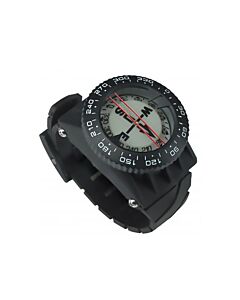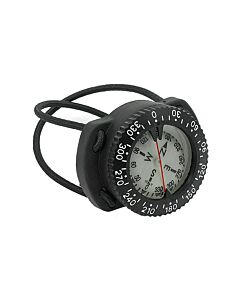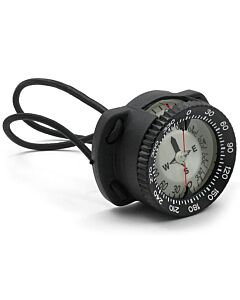Compasses
North is 180° with Tiny Bubbles?
These are not "orienteering" type compasses intended for use on land. The dive compass design is intended for use with underwater navigation where the diver will sight across the compass to determine the direction of travel. The azimuth numbers printed on the edge of the compass card used to indicate direction appear as the reciprocal (i.e. reversed) if you look directly down at the card (i.e. North at 180° and South at 0°). However, if you sight indirectly through the window on the side the azimuth numbers will read as expected (i.e. North at 0° and South at 180°).
If you wish to read the compass directly, then simply turn the ratchet bezel to align with the North indication and read the azimuth numbers from the bezel, not the card.
All our dive compasses are liquid filled, not with champagne, but with mineral oil to dampen the movement of the compass card and also protect the compass case from pressure at depth. The liquid is sealed in these compasses with a bubble of air. Liquids are considered incompressible; the air bubble provides an balancing expansion space because air is very compressible. A bubble will prevent the case from breaking when the liquid expands if heated. The bubble will change in size or even disappear entirely depending on temperature and pressure, including altitude and weather. Because the compasses are liquid filled with no compressible air space other than the insignificant tiny expansion bubble they are unaffected by pressure at depth and do not have a depth rating.
A small bubble is normal, but compass manufacturers recommend replacing the compass if at sea level and room temperature a bubble larger than { 0.25 in | 6 mm} develops. A larger bubble is indicative of a defective compass.



